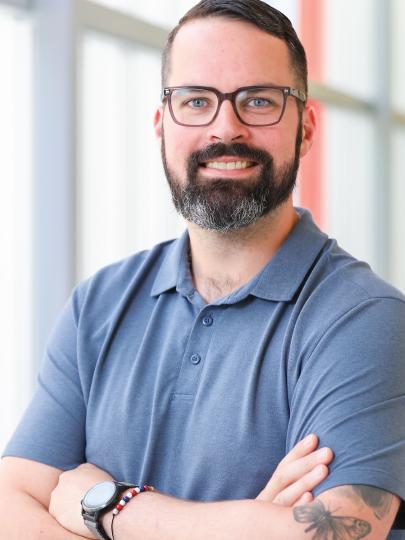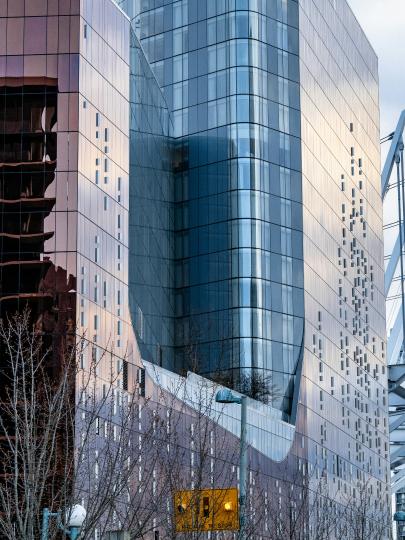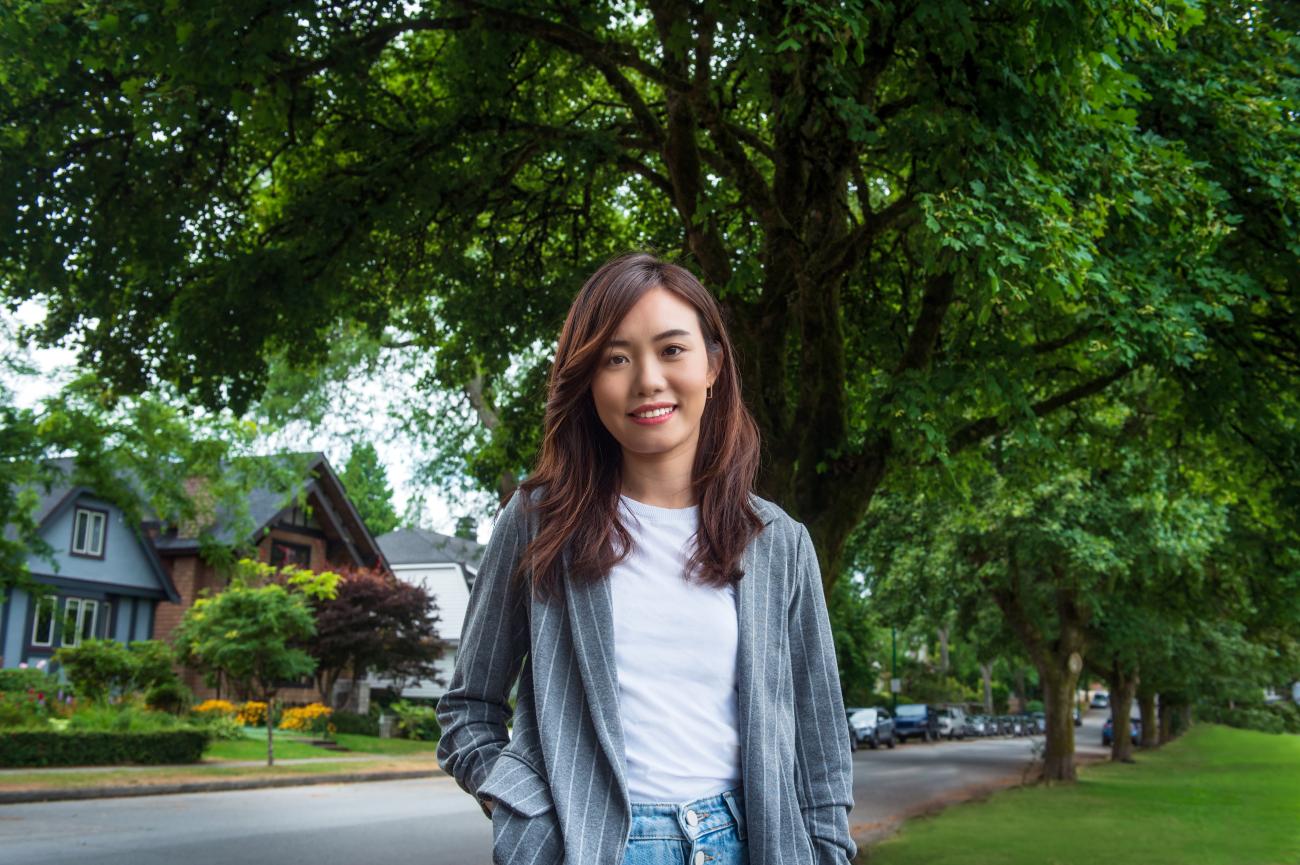Fighting climate change through our urban forests
Change starts locally. Here’s how UBC researchers are empowering Metro Vancouver communities to combat the region’s rising temperatures.
The heat waves this summer have brought the realities of climate change home for many people in Metro Vancouver. While some have installed air conditioners, UBC research scientist Zhaohua (Cindy) Cheng encourages a greener way to cool our homes and neighbourhoods — urban forests.
Urban forests consist of the vegetation and landscapes found throughout our cities, like public parks, streetscapes, natural areas and yards. Cheng is studying how green spaces like these can help make our cities more resilient to climate change.
The good news? “Individuals can play a big role in protecting and growing our urban forest,” she says.
Cheng is part of the UBC team that developed the Citizen’s Coolkit on Climate Change and Urban Forestry. It’s a free, fun DIY toolkit that offers hands-on activities for people to help fight climate change in their neighbourhoods.
Cheng led the development of the Citizen’s Coolkit along with the Faculty of Forestry’s Dr. Stephen Sheppard, the project’s principal investigator.
“Our research shows that people are overwhelmed by climate change, and they don’t know where to start,” Cheng says. “The Coolkit helps people break down what climate change means on a local scale. ‘What does it look like on my street? In my yard? In my household?’ Then we focus on something they can do to take positive action where they live.”
Balancing urban density with urban forests
For instance, one simple thing people can do is plant trees in their yards, or water nearby trees on public property in their neighbourhoods during dry spells.
“Trees are the most efficient air conditioner we’ve got,” says Dr. Sheppard.
Dr. Stephen Sheppard, who teaches in the urban forestry program at UBC, advocates climate action on a neighbourhood scale.
Trees provide shade for housing, which translates to heat protection for the people within. Trees cool the streets and regulate storm water run-off. They also reduce the need for air conditioning, saving people money.
So besides absorbing carbon and reducing unhealthy air pollution, trees protect people from the potentially devastating consequences of heat waves, flash floods, storms and more.
“Many citizens choose to take down trees, but they don’t yet recognize the consequences for their homes and their neighbourhoods.” – DR. STEPHEN SHEPPARD
British Columbia has warmed up by about 1 degree Celsius over the past century, and it’s predicted that daytime summer temperatures will be warmer by 3.7 degrees Celsius by 2050. A resilient urban forest can help offset these effects.
But as Metro Vancouver has become more urbanized, the urban forest tree canopy cover has gradually declined.
“The main reason for that decline is usually loss of trees on private property, whether it’s homeowner driven or densification through redevelopment,” says Dr. Sheppard. “Many citizens choose to take down trees, but they don’t yet recognize the consequences for their homes and their neighbourhoods.”
Areas that are developing or densifying rapidly, such as Surrey and New Westminster, are particularly vulnerable.
Surrey’s tree canopy cover has decreased from 33 per cent in 2001 to 28 per cent in 2013. New Westminster’s tree canopy has decreased at a rate of 1.5 per cent per year since 2004.
Dr. Sheppard notes that many municipalities have enacted policies to plant trees to compensate for this loss.
“Density overall is a good thing for many sustainability issues and for satisfying demand for housing,” he says. “Negative side effects on the urban tree canopy can be mitigated and even reversed if mature trees are strongly protected and enough space is left for planting on private property.”
Both municipal policy and individual actions can help with that, says Cheng, who is researching such strategies on urban density and urban forests for her doctoral studies at UBC.
“I want to see whether we can find win-win solutions with communities that are both green and dense,” says Cheng.
Connecting individuals for community action
UBC’s Faculty of Forestry has created the Citizen’s Coolkit to help translate research into action and help people cut their carbon footprint in half by 2030 to combat climate change.
Dr. Sheppard’s research lab has also partnered with the Vancouver School Board to create resources to help teachers engage high-school students in climate-change education.
“It’s a tough fight against climate change, and we’re connecting people so that they don’t have do it alone.” – CHERYL NG
In partnership with the Vancouver Park Board, the group also offers the Cool ‘Hood Champs program, which is based on the Coolkit. It’s offered for free through community centres, with workshops running this fall. UBC Forestry graduate Cheryl Ng runs the community outreach for the program, training locals who want to become champions for climate action on how to involve their friends, family and neighbours.
“A big part of it is community building,” says Ng. “It’s a tough fight against climate change, and we’re connecting people so that they don’t have do it alone.”
Using the Citizen’s Coolkit, she helps groups develop a positive action plan to implement in their neighbourhood. The actions start small and ramp up, from simply having a conversation about tree canopies to planning improvements on specific blocks, to installing a rainwater-collection system or planting fruit trees. Renters are encouraged to talk to their landlords, volunteer with the Park Board to plant trees in parks, water older trees on their block during heat waves, build community rain gardens and more.
These local changes can help mitigate the effects of global climate change in our region. They also help tackle the broader issue of environmental inequalities in low-canopy neighbourhoods that are especially vulnerable to heatwaves. “You can cool your house internally with a heat pump, but you can’t cool your neighbourhood,” Dr. Sheppard notes. “For that, you need enough trees.”
This article was originally published in Beyond by the University of British Columbia.






























